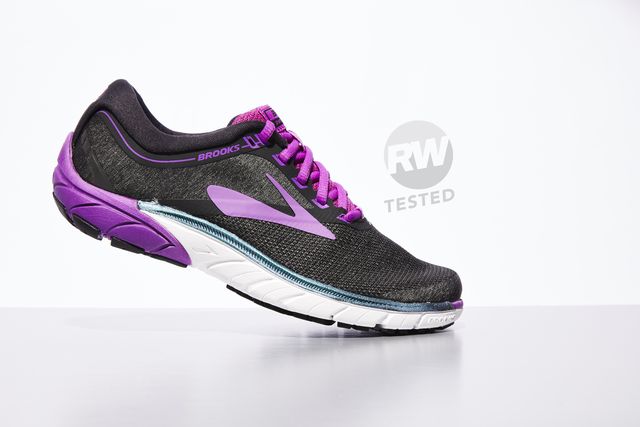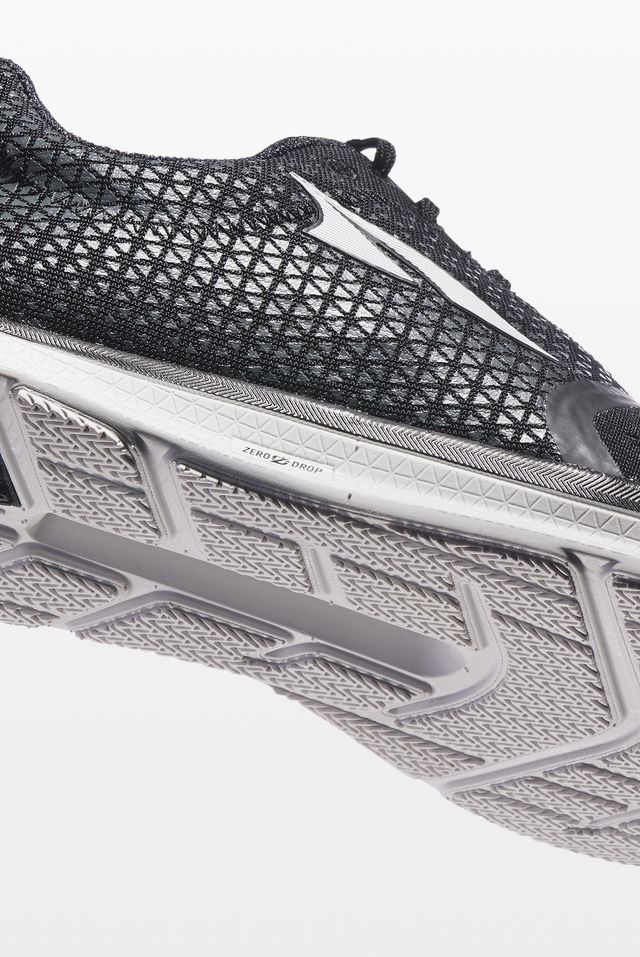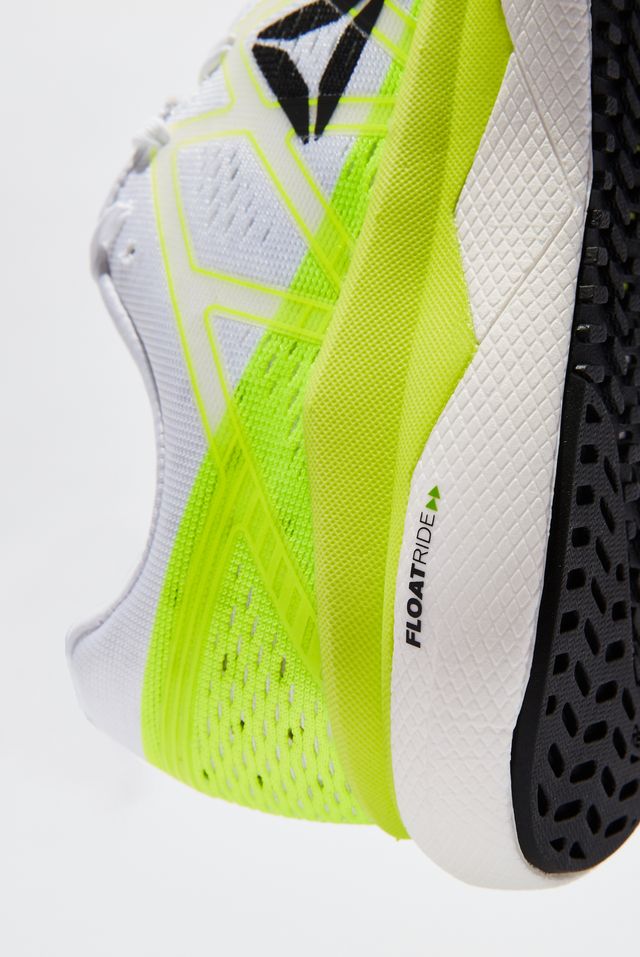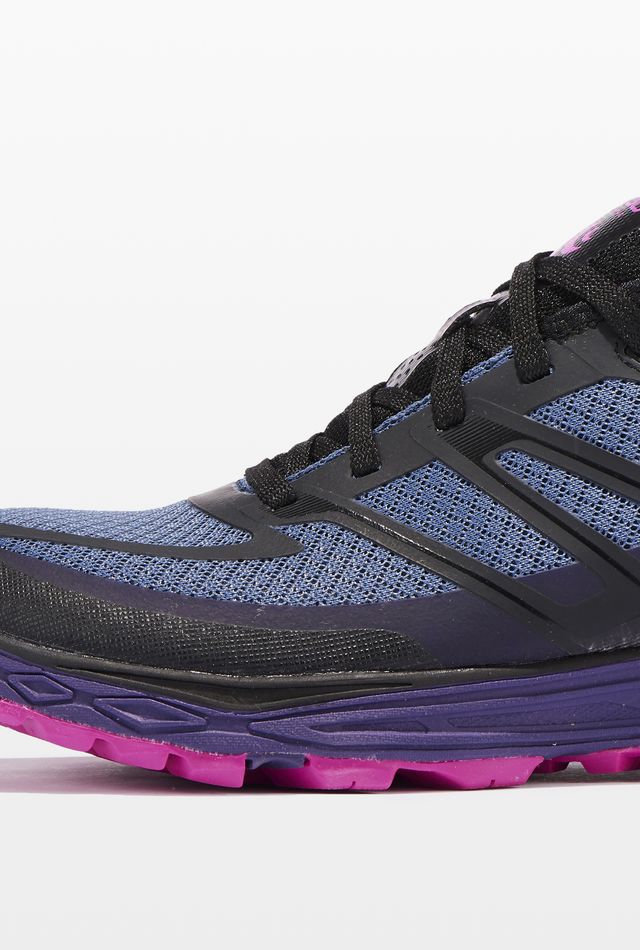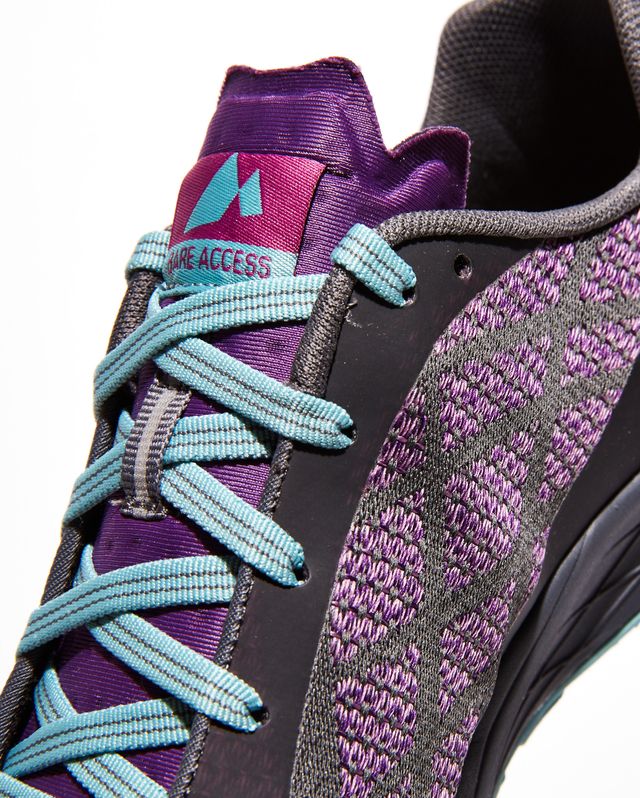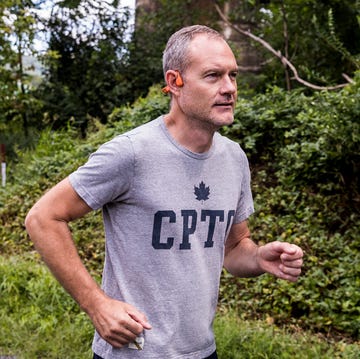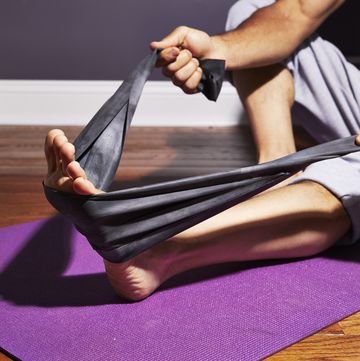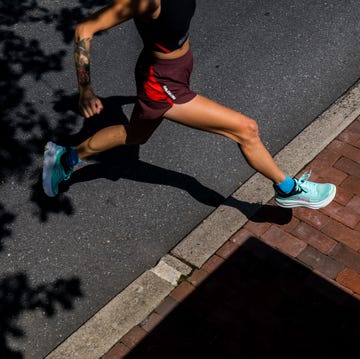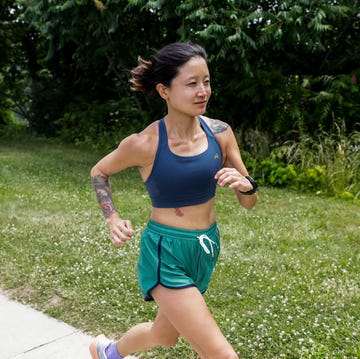Price: $110
Weight: 9.3 oz (M), 7.1 oz (W)
Type: Road
The right shoe for: Runners looking for a lightweight trainer with some stability
Buy Men’s Buy Women’s More Images
When Brooks discontinued the PureConnect a couple of years ago (R.I.P.), I would rotate the PureFlow and PureCadence, usually leaning toward the former. Now, as a test editor, I run in x amount of different shoes periodically, but the PureCadence is like an old friend. The 7 has the same soft, comfortable fit I can remember when I ran in the fourth generation PureCadence three years ago.
The PureProject shoes don’t weigh you down when racing marathons, nor are they too “minimal” when it comes to cushioning and support. The PureCadence is a lightweight stability shoe with a GuideRail on the outsole to encourage alignment; the GuideRail is a lighter version of Brooks’s support technology compared to the brand’s Diagonal RollBar found in the Ariel and Ravenna.
Even though the PureCadence is a stability shoe, the support isn’t imposing. The PureCadence caters to both the flat and normal arch crowd. Pronators and, er, “neutralators” alike will find a smooth and supportive ride. Marathon training runners searching for a lightweight shoe with a plush feel will find their match in the 7. And for those familiar with the PureCadence line, get ready to look down at your feet and say, “Well, hello again.”
Customized Cushioning
Brooks’s midsoles are composed of the brand’s DNA technology. DNA creates a customized fit, reacting to your weight, pace, running form, and environment to provide adaptive cushioning that disperses pressure. The PureCadence contains BioMogo DNA, which translates to cushioning throughout the entire midsole, not just the heel and forefoot.
Wear-testers liked that the shoe had enough support to run long without weighing them down. “Loved the cushioning!” said an enthusiastic wear-tester. “Thought this was one of the best features of this shoe. Even when running on gravel or through the woods, the terrain wasn’t an issue due to the high level of cushioning.”
Guidance
Brooks stuck with the same outsole as the 6 in the PureCadence 7, taking a hint that many runners will appreciate when their favorite shoes are in for an upgrade: If it works, why change it? For pronators and those last couple of miles when your running form suffers from race exhaustion, a GuideRail system in the outsole functions to align your hips, knees, and other joints.
Runners were impressed with the traction in the PureCadence, as well. “I had no issues with these shoes on the road, through the woods, or on the treadmill,” said a tester. “Even when the ground was slightly wet, they performed great. I imagine they will continue to in the months leading up to my race.”
Woven Air Upper
What makes the PureCadence so comfy is the stretch-woven upper and internal bootie. Wear-testers found the shoes ran a little short in the toe, which is why runners new to the PureCadence should consider going a size up.
One wear-tester reported some wear in the upper after only two or three weeks of testing: “The shoe has frayed in two spots, one spot quite noticeably. I don’t hit the opposite heel area as I run, so I have no idea why the shoe frayed quite the way it did.” I noticed the same odd fraying near the inside of my ankle on the heel collar after only 20 miles of running in the shoes. Durability elsewhere, however, was satisfactory.
All the Stats You Need!
Men’s
- Weight: Light | 9.3 oz
- Heel-To-Toe-Drop: Low | 6.7 mm
- Heel Height: Low | 28.3 mm
- Heel Cushioning: Firm
- Forefoot Height: Low | 21.5 mm
- Forefoot Cushioning: Moderate
- Flexibility: Stiff
- Stability Features: Few
- Energy Return: More
Women’s
- Weight: Light | 7.1 oz
- Heel-To-Toe-Drop: Low | 6.7 mm
- Heel Height: Low | 28.0 mm
- Heel Cushioning: Soft
- Forefoot Height: Moderate | 21.4 mm
- Forefoot Cushioning: Moderate
- Flexibility: Stiff
- Stability Features: Few
- Energy Return: More
We put each shoe through real-world usage and a battery of mechanical tests in our lab to provide you with objective—and exclusive—data. In addition to a shoe’s weight, we measure sole thickness (everything that sits between your foot and the road), how well the foam cushions your stride, and the flexibility of the forefoot. All this is taken into account in our reviews of each shoe.
Amanda Furrer, Editor, Running Reviews, studied journalism at NYU and writing at Emerson College. She has reviewed gear and covered other topics in the running space for almost 10 years. Since 2013, she has consecutively run the Boston Marathon. She also has a master’s degree in gastronomy from Boston University and was formerly a professional baker for two years before hanging up her apron.
